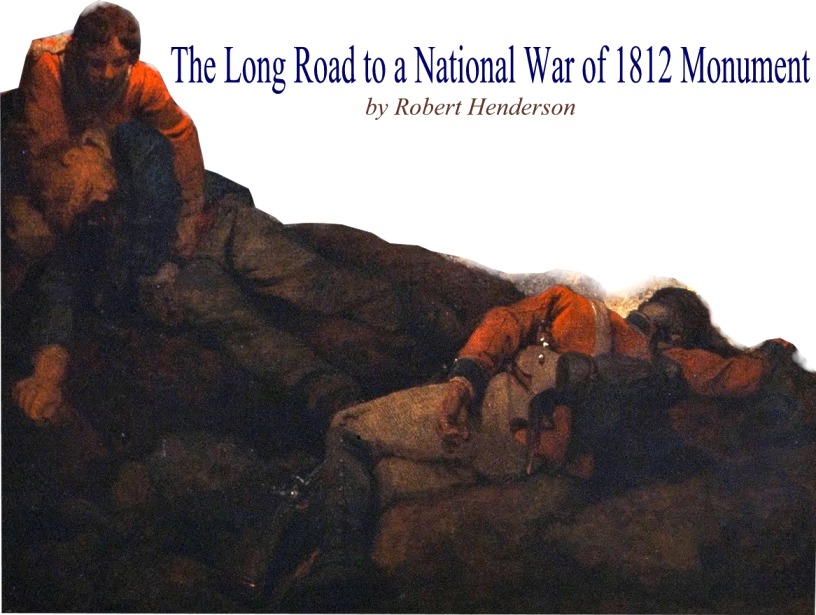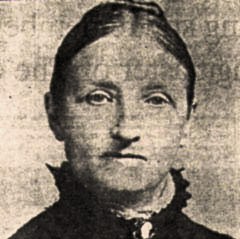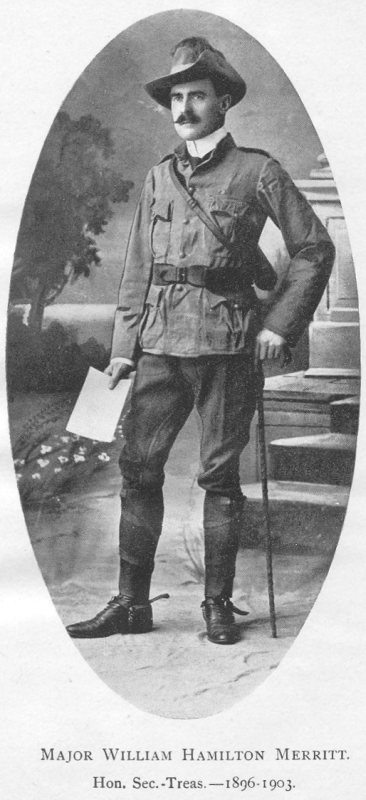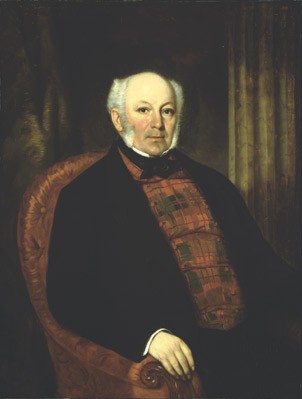|

A 150-year struggle, championed by a
Canadian premier, a women's rights activist and generations
of Canadian veterans, that encountered many hurtles including
the sinking of the TITANTIC.
"The
ship’s aground!” a voice cried out in the darkness as the
transport Harpooner struck a rock off Newfoundland.
Momentarily freed by the raging sea, the vessel smashed into
another jagged protrusion. Taking on water and collapsing on
its side, panic spread through the ship. Fire broke out adding
to the mayhem. Crashing waves washed the life boats, and those
trying to get to them, from the deck. Its masts gone, the
wooden ship slid off the reef and into deeper waters.
A handful of
sailors who had made it to shore, stared helplessly at those
trapped on the floundering vessel. Desperate for an escape
route, a plan was hatched to get a rope from the doomed ship to
the men on shore. Tying the life line around the waist of a
dog, man’s best friend braved the tossing, frigid waters to dry
land. Soon people entered the tumultuous sea holding
desperately to the rope. Debris tossing in the surf, stuck some
ending their hopes of surviving.
Thirty souls
had been pulled from the sea when disaster struck. The rope
caught the razor edge of a rock and was cut. With no means to
replace it, the survivors watched heartbrokenly as the vessel
was torn apart. The “cries and last agonizing sobs of men,
women and children” could be heard above the rolling waves, as
the sea claimed their lives. All told over two hundred War of
1812 veterans with their wives and children were lost that day
on November 10, 1816.
Today another
ship seems to have crashed on the rocks and is taking on water
fast. Canadian awareness of their historical roots was
sinking. A generation ago, it was a given that the War of 1812
played a central role in Canada becoming a nation. If one
believes the some media pundits, this century-old view, actively
promoted by the present federal government is unfounded. True,
unbridled Canadian patriotism of the late 1800s distorted some
facts and embellished the roles of some individuals from the
war. But who could blame them? Charting a path separate from
the United States had required an independent national
identity. The heroes of the War of 1812 were the perfect
solution.
Patriotic
books, poems, plays, and monuments were produced to honour the
heroism of Sir Isaac Brock, Tecumseh, Laura Secord and
Charles-Michel de Salaberry. They were all held up as role
models for Canadians to follow. This resonates in our national
fabric even today. To women activists, Secord was even more
important. While fighting for women’s right to attend
university and vote, Journalist Sarah Anne Curzon was taken by
Secord’s strength of character. Who wasn’t?
After all in
1860, eighty-five year old Secord bravely challenged the male
establishment and made sure she was counted among the veterans
of 1812. Travelling by cart, she had shown up at a clerk’s
office in Niagara-on-the-lake to sign, with other veterans, a
message to the visiting Prince of Wales (future King Edward
VII). Initially resistive, the clerk was put in his place by
the determined Secord and her signature was allowed. The local
newspaper supported her action and the Prince was so taken by
her gesture that, upon his return to England, a sizeable sum of
money of granted to Secord for her wartime service.
Curzon wrote
extensively about Secord throughout the closing decades of the
19th century. Her point in doing so was to show
that Canadian women had also patriotically served Canada in
1812, and that women were just as qualified as men to be
historians. Curzon’s interest in the war continued to grow
and in 1890 she called for “the erection of a monument for the
heroes of the War of 1812.”

Women's Rights Activist Sarah Anne
Curzon championed female access to a University education.
Her daughter would become one of the first women to graduate
from the University of Toronto
Until this
point, monuments in Canada had been confined to honouring
specific people, the most significant one being to Sir Isaac
Brock. The Canadian attachment to Brock was very real from the
start - not some fabrication or myth. Upon the war’s
conclusion, the Upper Canadian Parliament immediately approved
the building of a monument to their fallen
Lieutenant-Governor. A massive stone tower built on Queenston
Heights overlooking the Niagara River, Brock’s Monument soon
became a target for those wishing a republican path for Canada.
In 1840, a huge explosion of gunpowder at the base of the tower
broke the stillness of the majestic spot. It was Canada’s first
terrorist attack. However, unlike the World Trade Towers on
September 11, 2001, Brock’s tower monument did not collapse.
Still the structure was declared unsound.
The public
outcry was swift. Led by the Speaker of Upper Canada’s House of
Assembly, Allan Napier MacNab, a group of Canadians demanded the
tower be replaced with an even greater monument. Public
donations soon flowed in, principally from the militia and
native communities of the province. MacNab, a veteran of 1812
himself, continued to lead the reconstruction effort. In
Parliament, MacNab got passed Canada’s first anti-terrorism law
outlining punishments for anyone attempting to blow up the
monument again.
“The blood of our
militia and our valiant Indian allies was freely
shed, and mingled with the blood of the regular
soldiers with whom they fought and died side by side
in the defence of Canada… Every drop of blood shed,
every life lost in that eventful struggle, did but
cement more strongly attachment to the soil and
fidelity to the Crown…” – Allan Napier MacNab,
Premier of Canada, 1859.
While Premier
of Canada (1854-6), MacNab expanded his view on why the new
Brock Monument was being constructed. In 1859, thousands
listened as MacNab inaugurated the monument to the memory of
Brock, and “those who fell by his side upon the battlefield, and
through them to the imperishable memory of all who fell in
defence of Canada.” In essence he wanted people to consider the
monument an “emblem of a nation’s gratitude” to all 1812
Veterans. De Salaberry’s son was present, further underlining
MacNab’s intent. While MacNab said it was “one of the proudest
and happiest days of my life”, his more inclusive view did not
stick. Canadians viewed it solely as a monument to Brock.
Did the
Canadian government really have a responsibility to 1812
veterans? Yes. After Confederation in 1867, the Dominion of
Canada assumed responsibility of 1812 veteran pensions from the
provinces. This responsibility was expanded by a Liberal
Government in 1877 when pensions were extended to all 1812
veterans, not just those who had been wounded. So how Canada
treats its veterans today is very much connected to its historic
responsibilities towards the veterans of 1812.
Canadian
attempts to recognize 1812 veterans in other ways created a
string of failures. During the war itself, the Loyal and
Patriotic Society of Upper Canada was established to provide
warm clothing to the troops, and help the widows and orphans of
dead militiamen. After the war, with the government covering
pensions to widows, the charity focussed itself on producing the
“Upper Canada Preserved” medal for serving militiamen. However
not enough medals could be made to meet the demand so they were
never issued. In a controversial move, all the medals
manufactured were defaced and sold as bullion in 1840. Proceeds
from the sale went to the Toronto General Hospital. While a
worthy cause, the hospital was not why many Canadians had
donated to the charity.
After decades
of waiting, a medal was issued in 1847 by the British Parliament
for its veterans and to a small fraction of those who had served
in the Canadian militia. Although generous, the medal had not
come from those who had benefitted the most by the veteran’s
service: the Canadian people. As time rolled on, Canada’s
veterans from North West Rebellions in 1885 and the South
African War were granted pensions and honoured with monuments
for their efforts and sacrifice. However by the turn of the 20th
century, Canada was still without a national monument to 1812
veterans. Considering more Canadians died in 1812-15 than in
Afghanistan, Korea, South Africa and in the North West
combined, the omission was glaring. With Canadian
communities put to the torched, and parts of the population made refugees
in 1812, the civilian sacrifice alone justified such an
endeavour.
In 1902, the
Army and Navy Veterans Association tried to pay this
commemorative deficit by building a monument to 1812 soldiers
interred at the old Military Burying Ground outside Fort York in
Toronto. Because most of the graves were unmarked, the
monument served both as a testament to local 1812 veterans and a
sort of grave marker. Completed in 1907, the monument was
almost immediately forgotten about. Its location was far from
other military monuments at Queen’s Park and therefore was left
out of celebratory events for veterans. A century earlier,
Brock himself had identified the necessity of placing a monument
near where “constant bustle reigns.” The spot he picked for
the Nelson pillar in Montreal is still today a place where
multitudes assemble.
Another attempt
at a national monument for 1812 was not long in coming. Before
Veterans ceremonies in Toronto on May 25, 1909
Lieutenant-Colonel William Hamilton Merritt announced the idea.
To him, an 1812 national memorial was needed at the Ontario’s
legislature to commemorate “the brave men who saved Canada in
1812 to 1814 and who laid deep and strong the foundation stone
of this great Dominion.” Obviously the Harper Government’s
claim that “the War of 1812 was a seminal event in the making of
our great country” is hardly new. Surprisingly Merritt was
unaware that an 1812 monument had been completed two years
earlier in Toronto. This speaks to the limited success of that
endeavour.
A
monument is needed to “the brave men who saved
Canada in 1812 to 1814 and who laid deep and strong
the foundation stone of this great Dominion.” -
Lieutenant-Colonel William Hamilton Merritt, 1909
"The War
of 1812 was a seminal event in the making of our
great country ... Events surrounding the
1812-15 armed conflict laid the foundation for
Confederation and established the cornerstones of
many of our political institutions." -Prime Minister
Stephen Harper, 2012
With
encouragement from Ontario’s Premier -but no money- Merritt
moved forward with his idea as a way to mark the war’s
centennial. With grandiose plans, Merritt petitioned the
federal government for financial support in 1912. This drew
criticism from the Ottawa Citizen who deemed Toronto as
an inappropriate location for such a monument. Still confident
things would work out, French sculptor Paul Chevré was asked to
submit a design for the War of 1812 monument. Eerily
foreshadowing events to come, Chevré chose the Titanic as
his means of transportation to North America to present his
ideas. While he survived the ocean liner’s sinking, the plans
for the monument shared the same watery fate as the war’s
veterans off Newfoundland in 1816.
With no plans
and little money, the monument project was sunk. To salvage the
situation, Merritt asked Prime Minister Robert Borden for
permission to mount a simple plaque in Parliament’s centre block
in Ottawa, commemorating the battles of the War of 1812.
Unveiled in 1913, this plaque survived the fire of 1916 that
destroyed the building and is still on a wall in Parliament
today. Unfortunately, like Toronto’s monument near Fort York,
few are even aware of its existence.

For the next
century Canada focussed its commemorative efforts on
designating, marking, preserving and in some cases
reconstructing War of 1812 historic sites of national
significance. Scholars turned their attention to de-bunking
myths and distortions of facts about the War of 1812. In doing
so, however, the word “myth” became associated with the role of
Canadians in the war. The principal 1812 myth that was
dismantled was that farmers with no military training had won
the war. This was untrue. But trained Canadian regulars
(including full-time Canadian militiamen), with their native
allies, did play a central role in the conflict’s outcome.
Though called
for by generations of Canadians before World War One, the idea
of an 1812 national monument was washed away by the waves of
commemorative projects for the conflicts of the 20th
century. Luckily over time our national consciousness seems to
strive for equity and balance in commemorative efforts.
Therefore in 2012 when the Canadian Government announced a
National War of 1812 monument for Parliament Hill, scholars
should not have been surprised. It is an outstanding debt the
Canadian people have borne for two centuries.
During the
World Wars, the name of De Salaberry and “les héros de
Chateauguay” were referred to often in military recruiting
drives in Quebec. He was Quebec’s most popular war hero and
had been recognized as such by the province’s Legislature in
1814. It seems only fitting that a statue of him, along with
other prominent historical figures, was included in designs of
Quebec’s National Assembly in 1886. It was these statues that
inspired Quebec’s motto “Je me souviens” or “I remember.”
But some
Canadians have clearly forgotten the central role 1812 played in
the development of our national identity. In MacLean’s
Magazine on March 20, 2013, John Geddes opined the proposed
monument was inappropriate for Parliament Hill, especially at
its proposed location overlooking the National War Memorial.
On the contrary, it is exactly the right spot.
Borden’s
decision in 1913 to allow Merritt’s plaque on a wall in
Parliament does establish a precedent for 1812 on the Hill. The
presence of military monuments and figures at both Ontario’s and
Quebec’s legislatures offer further weight to this argument.
With the Canadian Forces perpetuating units from the War of
1812, locating the monument close to the National War Memorial
is ideal. By doing so, the new monument can be included in
remembrance events. Keeping the memory alive of the sacrifice
of 1812 veterans is the point.
The Duke of
Wellington fought at the time of the War of 1812, and placing
the monument beside a street named after him appears
appropriate. It is a memorial to troops he trained and fought
with, as well as to Canadian combatants. The monument being
near the Rideau Canal is also noteworthy. The war had made
officials realize the necessity of building the canal system.
Without the canal there would have been no Ottawa to select as
Canada’s national capital. Let us not forget that many of
the elements of the Parliament buildings, like the Peace tower
and the Memorial Chamber, are to honour our soldier's
sacrifices.
In 1812,
provincial parliaments created military units that fought and
died defending Canada. The Parliament of Canada inherited that
legacy in 1867 when it recognized its legislative responsibility to 1812
veterans. For 200 years, Canadian legislators have sent troops
to fight Canada's battles. It is requisite Members of Parliament are
constantly reminded of the ultimate sacrifice Canadians have
made in following their orders. The 1812 monument is not only
suitable for Parliament Hill, it is long overdue.
|
Canadian Premier Sir Allan
MacNab: Veteran and 1812 Advocate

The party Sir John A. Macdonald
would eventually lead was born in 1854. That year
Augustin-Nobert Morin’s parti bleu in Canada East
and Canada West’s Conservatives lead by Sir Allan
Napier MacNab had joined forces and won control of
the Legislative Assembly of the united Province of
Canada.
Though Morin’s father was a
Captain in the Saint-Hyacinthe Militia and had been
called up during the American invasion of Lower
Canada in November 1812, it is Premier MacNab’s 1812
war record that is most noteworthy (a conflict
MacNab in 1815 called “the War in Canada”). When
the American fleet arrived to attack the provincial
capital of York (Toronto) on April 27, 1813
fifteen-year-old MacNab was busy with his studies at
the Home District School (corner of King and George
Streets) Able to bear a musket, he and some of his
classmates were called upon to defend the town.
Whether MacNab was actually engaged against the
invaders is unknown. With the town overrun, MacNab
morphed from soldier to refugee.
Retreating with the surviving
troops eastward towards Kingston, MacNab trudged
through the cold rain “pouring in torrents” making
the road almost impassable. With only the soaking
clothes on his back and little to eat, MacNab’s
first military experience was hardly glorious.
After finally arriving in Kingston, military
officials were stuck with the problem of figuring
out what to do with the young MacNab.
MacNab’s father had been a
lieutenant in the Dragoons of the Queen’s Rangers in
the American Revolution, and was known to
Lieutenant-Governor Major-General Sir Roger Sheaffe.
(his father would also serve as Usher of the Black
Rod for the provincial legislature from 1815 to
1830). As a result a midshipman’s position the HMS
Wolfe was arranged for MacNab. A month later, the
lake fleet set sail with the young adventurer to
attack the American naval base at Sackets Harbor,
New York. Discouraged by the unlikelihood of
gaining an officer commission in the Royal Navy,
MacNab turned his attention to the army.
Willing to earn a commission,
MacNab was appointed to the British 100th
Regiment of Foot as a gentleman volunteer. This
meant he trained, marched and fought with the rank
and file, but dined and socialized with the
officers. If MacNab could prove himself a worthy
soldier, an officer’s commission was in the
offering.
When MacNab and his regiment
marched into his birthplace of Niagara-on-the-lake
in December 1813, the Upper Canadian town was a
smoldering ruin. The Americans had burnt the
community and withdrawn across the river to winter
quarters in Fort Niagara and Buffalo, New York.
However a settling of accounts was close at hand.
Under the cover of darkness, MacNab and 100th
Foot crossed the river and stormed Fort Niagara,
capturing the American garrison. His commanding
officer was quick to single out MacNab for his
“great bravery and zeal” in being “amongst the
foremost during the attack of the picquets and the
assault of the works.” MacNab finished the month by
participating in the attacks on both Black Rock and
Buffalo.
The next month,
Governor-General Sir George Prevost awarded MacNab’s
valour by recommending him for a commission in Sir
Isaac Brock’s old regiment, the 49th
Foot. With a gold epaulet on his shoulder marking
his rank as an Ensign in his new regiment, MacNab
participated in the campaign against Plattsburgh,
New York in 1814.
It is interesting to note that
41 years later in 1855, Morin would be replaced as
MacNab’s governing partner by another veteran of the
Plattsburgh campaign, Étienne-Paschal Taché.
Together, these two War of 1812 veterans led the
Province of Canada and passed sweeping changes to
the Militia. The effects of the Militia Act of
1855 can still be seen in the Canadian Army today
and Taché is recognized as the Department of
National Defence's first Minister. It seems
only fitting that Taché 's son would author Quebec's
motto "Je me souviens" or "I remember".
Alas it was a short-lived
partnership. Distracted by railroad interests and
slow to appease growing discontentment within the
new party, MacNab was forced aside to make way for a
new leader, John A. Macdonald.
Today MacNab’s home, Dundurn
Castle, is a National Historic Site and can be
visited in Hamilton, Ontario. It is only fitting
that local artefacts of the War of 1812 are also on
display there as part of the Hamilton Military
Museum.
|
|

